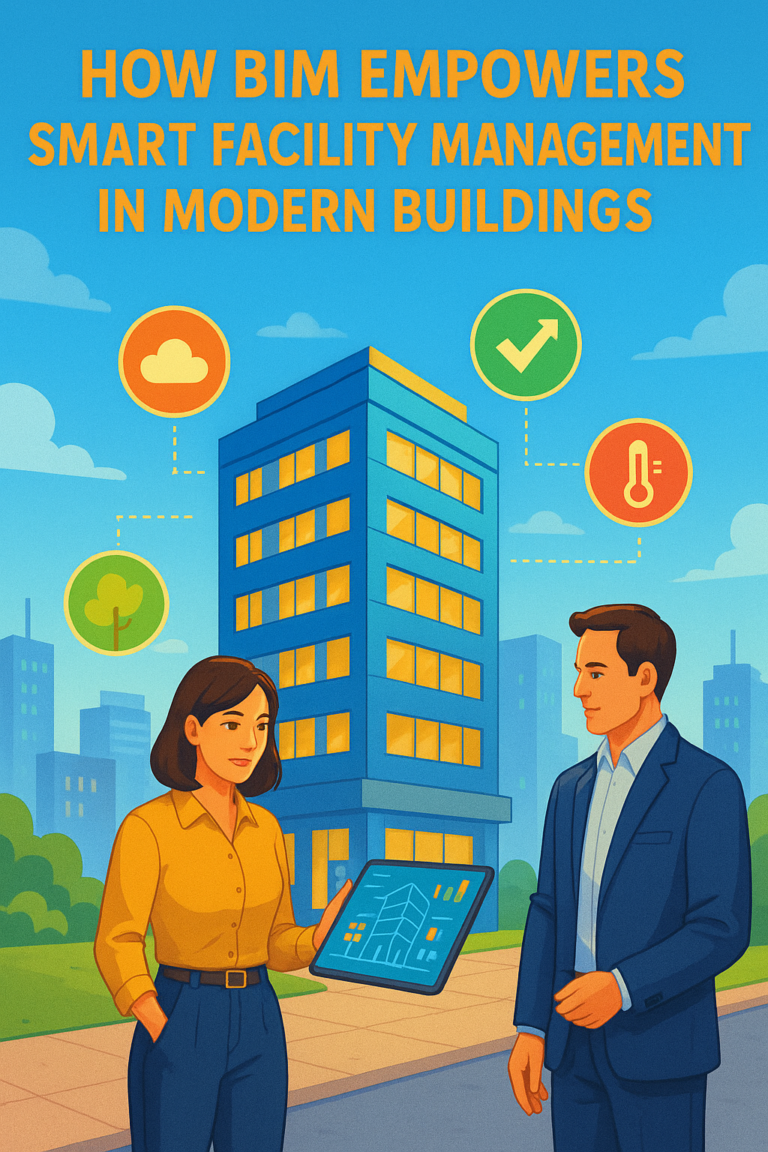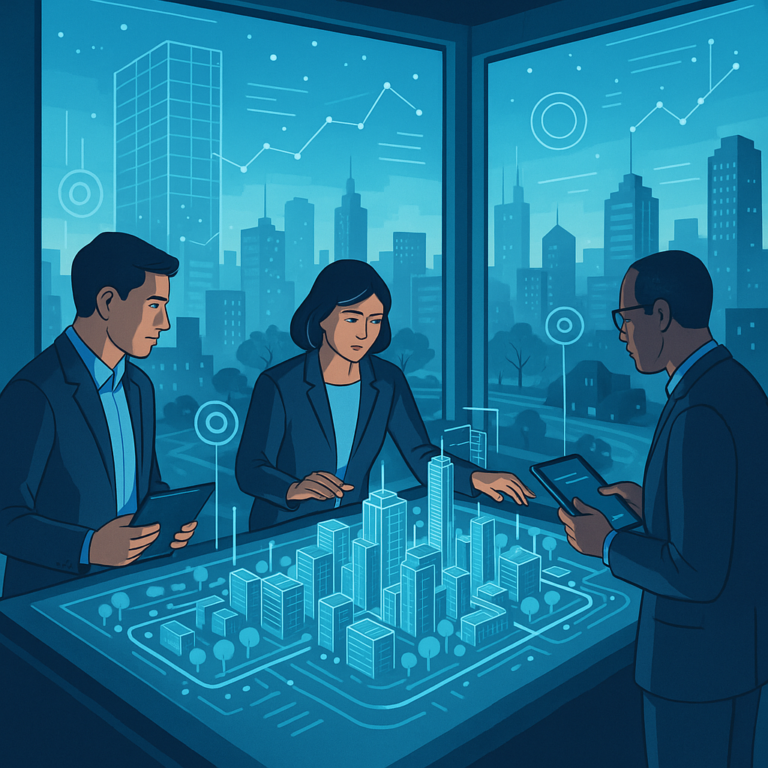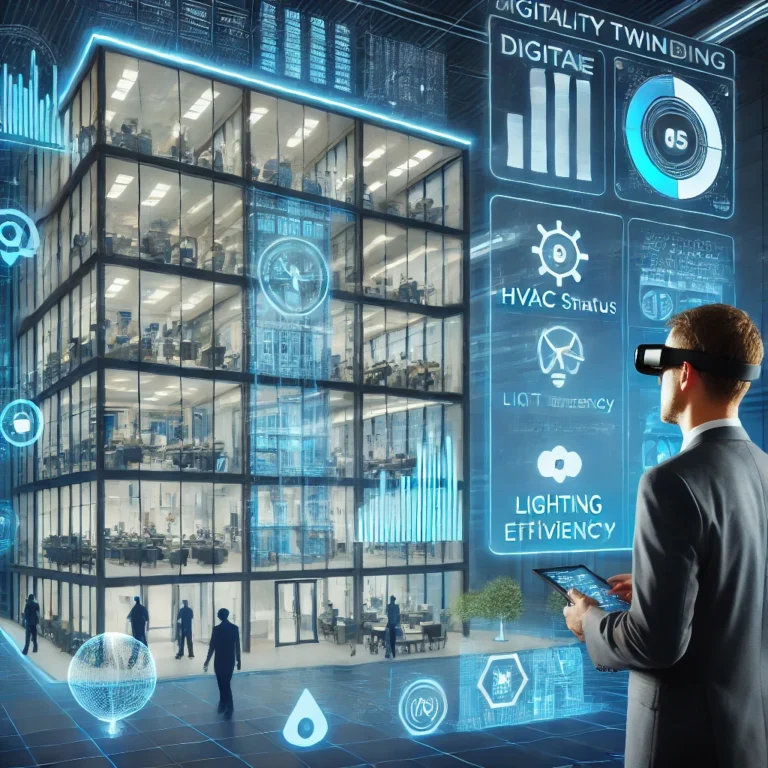Introduction 🌟
The construction and real estate industries are entering a new era with Digital Twins and Building Information Modeling (BIM).
While BIM has already transformed how architects, engineers, and contractors design and collaborate, Digital Twins take this a step further by connecting physical assets with real-time digital models.
👉 Together, BIM + Digital Twins empower stakeholders to design smarter, build efficiently, and manage buildings with real-time intelligence.
What is a Digital Twin? 🤖🏗️
A Digital Twin is a virtual replica of a physical asset (like a building, bridge, or city).
It doesn’t just mirror geometry — it also connects real-time data from IoT sensors, AI, and analytics.
✨ Imagine a building that “talks” to you — reporting energy consumption, HVAC efficiency, occupancy patterns, and predictive maintenance needs.
Digital Twin = BIM Model + Real-Time Data + AI + IoT
BIM vs Digital Twin: The Key Differences ⚖️
| Feature 🏷️ | BIM (Building Information Modeling) 🏗️ | Digital Twin 🤖 |
|---|---|---|
| Definition | 3D model with structured information 📐 | Real-time digital replica of a physical asset 🔗 |
| Focus | Design, construction, and documentation 📂 | Operation, monitoring, and predictive analytics 📊 |
| Data Input | Static design & project info ✍️ | Real-time IoT sensor data 📡 |
| Stage of Use | Mostly design & construction phase | Mostly operations & facility management phase |
| Outcome | Collaboration & clash detection ✅ | Insights, optimization & cost savings 💰 |
How Digital Twins & BIM Work Together 🤝
- BIM Creates the Base Model 🏗️
- Architects and engineers create a 3D BIM model of the building.
- Digital Twin Extends BIM 🌐
- IoT devices (sensors, meters, trackers) feed real-time data into the BIM model.
- Smart Insights & Monitoring 📊
- Facility managers gain visibility into energy use, equipment health, and occupancy.
- Predictive Maintenance 🛠️
- AI algorithms forecast breakdowns before they happen.
- Lifecycle Management 🔄
- From design to demolition, the building is managed smarter.
Benefits of Using Digital Twins with BIM 🌍
✅ Better Decision-Making – Facility managers get real-time insights 📊
✅ Reduced Costs – Predictive maintenance avoids costly breakdowns 💰
✅ Energy Efficiency – Optimize HVAC, lighting, and resource usage 🌱
✅ Improved Safety – Monitor structural health & fire safety 🔥
✅ Sustainability – Achieve green building certifications ♻️
✅ Enhanced Collaboration – Data accessible across stakeholders 👥
Real-World Applications 🌎
🏢 Smart Buildings
- Monitor HVAC systems, elevators, lighting, occupancy in real-time.
- Reduce energy bills with predictive energy optimization.
🏥 Hospitals & Healthcare Facilities
- Track patient movement, medical equipment, and air quality.
- Digital Twin ensures safe, efficient environments.
🏗️ Construction Sites
- BIM + IoT sensors track worker safety, materials, and machinery.
- Managers see real-time progress vs. planned schedules.
🛣️ Smart Cities
- Entire neighborhoods modeled as digital twins.
- Optimize traffic flow, utilities, and sustainability goals.
Key Technologies Behind Digital Twins 🔧
- BIM (Revit, ArchiCAD, Navisworks, Bentley) 🏗️
- IoT Devices (sensors, cameras, trackers) 📡
- Artificial Intelligence (AI & ML) 🤖
- Cloud Platforms (Azure Digital Twins, AWS IoT TwinMaker) ☁️
- AR/VR Visualization Tools 🎮
Step-by-Step Guide to Creating a Digital Twin from BIM 📝
- Develop a Detailed BIM Model 📐
- Start with high-quality geometry and metadata.
- Integrate IoT Sensors 📡
- Connect devices to capture live performance data.
- Establish Data Connectivity 🌐
- Use cloud platforms for data flow and storage.
- Apply AI & Analytics 📊
- Transform raw data into actionable insights.
- Visualize & Interact 🖥️
- Use AR/VR to interact with the Digital Twin in immersive ways.
- Continuous Monitoring 🔄
- Update data streams in real-time to reflect physical changes.
Challenges in Adopting Digital Twins ⚠️
- High Initial Costs 💰
- Data Security Risks 🔐
- Complex Integration with Legacy Systems 🖥️
- Need for Skilled Workforce 👷♂️
- Standardization Issues 📏
Future of BIM & Digital Twins 🚀
🔮 By 2030, experts predict:
- 90% of new construction will use Digital Twin technology.
- Smart cities will operate with integrated BIM & Twins.
- AI will enable fully automated building operations.
- Sustainability targets will be achieved faster 🌱.
Conclusion 🎯
The combination of Digital Twins and BIM marks a revolution in construction and facility management.
- BIM ensures efficient design & collaboration 🏗️
- Digital Twins deliver real-time intelligence & lifecycle optimization 🔄
Together, they empower smarter, safer, and more sustainable buildings.
📢 Have you explored Digital Twins in your projects? Share your thoughts and experiences in the comments below! 💬




